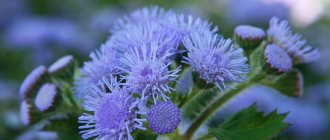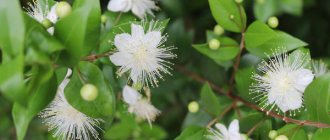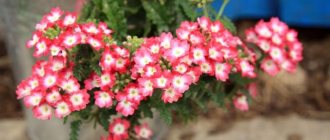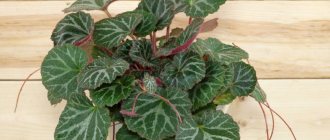Author: Elena N. https://floristics.info/ru/index.php?option=com_contact&view=contact&id=19 Category: Houseplants Published: February 02, 2019Last edits: January 11, 2021
- The myrtle has dried up
- Properties of myrtle
- Common myrtle (Myrtus communis)
plant (lat. Myrtus) belongs to the genus of evergreen woody plants of the Myrtaceae family, the flowers of which contain essential oil. The natural habitats of myrtle are the Mediterranean, the Azores and the north of the African continent. It is no coincidence that the name of the plant is consonant with the Greek word “myrrh”, which means “balm, liquid incense”, because it is as a cult attribute that myrtle essential oil has long been used in temples of various concessions. Legend says that Adam, expelled from Eden, brought the myrtle flower with him to Earth as a memory of the lost paradise. Many peoples have many myths, beliefs, traditions, rituals and signs associated with this plant. The myrtle tree has long been considered a symbol of glory, peace and hope. Our ancestors had myrtle flowers not only for cult purposes, but also for medical and cosmetic purposes, and some myrtle preparations are still popular today. But for plant lovers, a blooming and fragrant myrtle is an object of admiration and a source of aesthetic pleasure, especially since home myrtle is undemanding in care, and those who know how to care for myrtle can easily achieve the optimal shape for a plant that will decorate your home and help preserve To your health.
Planting and caring for myrtle
- Flowering: June-July.
- Lighting: bright sunlight until noon, then bright diffused light (southern, western and eastern windows).
- Temperature: in summer – normal for residential premises, in winter – 5-10 ˚C.
- Watering: in summer - frequent and plentiful; in cool seasons, watering is reduced.
- Humidity: high. Daily spraying of leaves is recommended, especially in hot weather.
- Feeding: from March to August once a week with complex mineral fertilizers.
- Dormant period: winter; in cool conditions - up to three months, in normal conditions - a month and a half.
- Replanting: young plants - annually, adults as needed.
- Pruning: after flowering or early spring.
- Reproduction: cuttings, less often seeds.
- Pests: scale insects, aphids, spider mites, whiteflies, mealybugs.
- Diseases: root rot.
Read more about growing myrtle below.
Transfer
Myrtle grows slowly and does not need frequent replanting. It is enough to do this every 3 years if he is an adult. For a young flower, the frequency is once every 12 months. It's better to do this in the spring. When replanting, the new pot should be slightly larger than the old one.
At its bottom, be sure to first lay drainage, and then the prepared substrate. Place the tree in a pot and cover the roots with soil. Level the soil and water the flower.
Tip : to make it easier to remove the plant from the pot when replanting, do not moisten the myrtle for several days beforehand. If the soil is dry, it will be much easier to get it out of the soil.
Botanical description
Myrtle, which according to various sources has from forty to one hundred species, in its natural habitat can grow up to three meters in height, and indoor myrtle, under the most favorable conditions, reaches only a meter. Usually myrtle at home is a tree with a round crown 30-60 cm tall. Small leathery, as if polished, leaves of myrtle are located on the shoots sparsely and oppositely on short petioles, they have an elongated shape, the tops of the leaves are pointed. Flowers, simple or double, are either single or collected in a raceme. The fruit is a nut or drupe berry.
An interesting fact is that myrtaceae include such valuable plants for humanity as tea tree, eucalyptus, and clove tree.
Types and varieties of myrtle tree
There are from 20 to 40 species and more than 100 varieties of myrtle. Most of them are grown in botanical gardens in many countries around the world.
Myrtle - care at home, how to reanimate if it has dried out
For growing at home, the variety most often used is the common myrtle, the most unpretentious of them.
The characteristics that attract the plant are its high decorative value, aroma, healing properties and the ability to grow a bonsai tree.
Swamp myrtle (Calyculata)
Swamp myrtle is an evergreen shrub up to 1 meter high. The popular name is Cassandra.
The crown is spreading, the stems are straight. There are small scales on the branches. The leaves are small, attached to short petioles. Snow-white flowers are collected in racemes. It is distinguished by its adaptability to the Russian frosty winter. The favorite place of growth is sphagnum bogs. Life expectancy is up to 50 years.
Additional Information. Leaves and shoots contain poison. Their use as livestock feed is strictly prohibited.
Variegata myrtle
It is distinguished by variegated leaves, bordered by specks and dashes of an amber hue, the brightness of which depends on the light. Myrtle variegata feels great outdoors and indoors.
When favorable conditions are created, it begins to bloom with small flowers of beige and snow-white shades with golden stamens. Used to make flower arrangements.
Unusual flower of the marsh myrtle
Exudes an amazing aroma, destroys germs and neutralizes carbon dioxide. Considered a symbol of fertility.
Myrtle Hymen
The evergreen shrub received its name in honor of the God of Marriage, the second name is the Happiness of the Bride. Symbolizes youth and beauty. Young people planning to become hymen gave each other branches of myrtle. It has small emerald-colored leaves in the shape of a lancet. In the wild it grows up to 5 meters tall, as a houseplant - no higher than 1 meter. Flowering branches decorate wedding bouquets.
Lush flowering of the Hymen variety
Lemon Myrtle (Lemon)
It has a lemon scent. In the wild it is found in the tropical zone of the Australian mainland. Widely used in cooking for the preparation of syrups, sauces, dressings and drinks. Dried leaves are used as spices and seasonings.
Myrtle Communis, or common (Communis)
Myrtle Communis belongs to the ornamental crops. Prevails in evergreen oak forests of the Mediterranean adjacent to thickets of shrubs. It looks like a small evergreen tree up to 5 meters high.
Interesting! The leaves are single, oblong in shape, located on tetrahedral stems. Blooms profusely with snow-white, very fragrant flowers located on short racemes.
Large-leaved myrtle
A variation of the common subspecies. Myrtle macrofolia has an antimicrobial effect. Destroys bacteria and pathogenic rods. Used in the treatment and prevention of:
- flu;
- tonsillitis;
- sinusitis;
- prostatitis;
- gastrointestinal diseases.
Grows up to 4 meters. The stems are tetrahedral, shiny leaves are opposite, up to 5 cm long with pointed edges. Small flowers with five snow-white petals grow on long stalks. The golden stamens are arranged symmetrically.
Myrtle Alhambra
Attracts with its decorative appearance. Suitable for growing outdoors and as a houseplant. Used to create compositions. Prefers bright, illuminated places.
White myrtle fruits Alhambra
Flowering occurs in spring. The snow-white flowers are miniature with a strong aroma. In their place, oval-shaped seed pods are formed; unlike other species, they are snow-white in color.
Myrtle Tarentina
Dwarf form of the common subspecies. It blooms profusely with miniature fragrant snow-white flowers collected in inflorescences.
Small-leaved, leaves no more than 1.5 cm in length, elongated in shape with sharp jagged edges, located on short emerald petioles.
This representative of the flora is growing rapidly. In the wild it exceeds 5 meters, in indoor conditions it reaches 1 meter. Responds well to sunlight, regular watering and spraying.
African myrtle (Myrsina)
African myrtle is mistakenly classified as a member of the Myrtaceae family, although it belongs to the Myrsinoideae family. They have an external similarity, but a closer look reveals a different shape of the leaves, the flowers are smaller and different from the myrtles.
The correct name for the lookalike is African myrsina. Habitat:
- African continent;
- China;
- Himalayas.
Myrsina Africana of the Myrsinaceae family
There are shrubby and tree-like forms of myrsina, and there are variegated ones that require good lighting.
The shoots are reddish. The small elliptical leaves are dark green on the upper side and light green on the lower side.
There are female and male flowers. The first ones are smaller with white, light purple or pinkish petals. Men's - in lilac tones with bright red anthers.
The purple berries produced in autumn are fleshy, ball-shaped and contain 1 seed. They hang on the branches for a long time, maintaining their decorative appearance.
Growing myrtle from seeds
How to propagate myrtle by seeds at home? At the beginning of spring, myrtle seeds are sown on the surface of a substrate consisting of equal parts of sand and peat, in a container 7-10 cm deep, sprinkled on top with a layer of the same substrate 3-5 mm thick and, covered with glass, kept at a temperature of about 20 ºC, ventilating and moistening the crops, as well as removing condensation from the glass.
- Agapanthus (Agapanthus) – care, photos, types
Shoots appear in a week or two, and when the seedlings grow 2-3 true leaves, they are planted in the same substrate in individual pots so that the root collar remains above the soil surface. A month after picking, the seedlings are fed with nitrogen fertilizer of weak consistency.
However, amateur breeders should know that myrtle grown from seeds:
- will bloom no earlier than in 4-5 years;
- is unlikely to retain varietal characteristics.
In addition, the germination of myrtle seeds sharply decreases after just a year of storage, and obtaining them is problematic, since this will require artificial pollination of the plant.
Caring for myrtle at home
Growing conditions
Caring for myrtle at home includes watering, pruning and feeding the plant, as well as creating optimal or at least necessary conditions for it. The myrtle houseplant prefers southern, western and eastern window sills and is tolerant of drafts, temperature changes and direct sunlight. Moreover, if there is no sun, the myrtle will not bloom. In summer, myrtle prefers life in the fresh air; in winter, the plant needs coolness - 5-10 degrees Celsius, and the best place for it would be a glazed, unheated balcony.
In the warm season, myrtle should be watered Insufficient or infrequent watering can cause the plant to drop its leaves. With the onset of cold weather, watering is reduced, but if the plant spends the winter indoors with heating devices running, it will have to be watered just as abundantly as in the summer.
In addition, there will be a need to spray the leaves of the plant with water at least once a day, since myrtle needs high air humidity, and you need to remember this in winter, if the temperature in the room with myrtle is above 15 ºC, and in summer. Water for water procedures and irrigation must be settled or passed through a filter.
Once every week or two from March to August, myrtle needs fertilizing. If you are growing a bonsai from myrtle or you are not interested in its flowering, then feed the plant with a complex fertilizer for ornamental foliage plants, but if you want to see myrtle bloom, then apply fertilizer for flowering plants.
- Almonds: planting and care, types and varieties
Myrtle has a pronounced dormant period, the duration of which determines the location of the plant: if myrtle overwinters in a cool place or on a northern windowsill, then it can rest for up to three months, and if it is warm and in bright light, then only for one and a half months.
Trimming
Caring for myrtle also involves giving its crown the desired shape. The formation of myrtle depends on what you are growing it for. Many people like myrtle in the form of a standard tree with a neat compact crown, but there are people who do not care what the plant looks like, as long as it “blooms and smells.” In any case, do not get too carried away with pruning the side shoots of young plants or pinching them excessively.
On the other hand, myrtle grows quickly, is easy to regenerate, and you always have the opportunity to change your plans for its appearance. The main thing is that the formation of the crown should be done in early spring or after flowering.
Transfer
Young plants are replanted annually, adult myrtles - as needed, which is determined in this way: if the freshly watered soil dries out within 24 hours, then it is time to increase the amount of substrate, and, therefore, a larger pot will be needed. Choose a pot that is only a couple of centimeters in diameter wider than the previous one. It is better to replant in the spring, using the method of transferring the plant from an old container to a new one, since it does not injure the root system.
The need for light
In winter, the plant needs a lot of sunlight. Thanks to the correct maintenance of the plant at this time, you can strengthen its health and activate the flowering period.
If it is necessary to change location, work should be done carefully and gradually, because the lighting level will be different. The myrtle first needs to be placed a little further from the window and light, this way it will get used to the changed conditions more quickly, and the plant will tolerate them more calmly.
The plant loves light, but it is important that the rays are not direct, but diffused. The ideal place for myrtle in winter is a western or eastern windowsill. When located in the northern half, spring flowering will be very sparse.
Myrtle propagation
If you want to propagate myrtle, then the best way to do this is cuttings, because it allows you to preserve the species and varietal characteristics of the plant. In addition, this is a much more reliable method of propagation than seed, and plants from cuttings bloom faster than those from seeds - in three years. Therefore, if you want to grow a myrtle tree at home, you don’t need to buy seeds that quickly lose their ability to germinate, just don’t be shy to ask your friends for a cutting after formative pruning. The best results are obtained from semi-lignified cuttings of the current year.
You can take cuttings from January to February, or in July, and it is better if they are from the lower or middle part of the crown. Remove the lower leaves from a piece of shoot 8-10 cm long, shorten the upper ones by a third, and the largest ones by half. Treat the lower cut with root or heteroauxin and plant for rooting in a mixture of leaf soil (one part) and coarse sand (half part), or sphagnum and sand in the same proportions. It is better to take a low and wide container for rooting, and it is advisable to cover the top of the cutting with a glass jar.
Rooting occurs at a temperature of 17-20 ºC in a shaded place. From time to time the jar is removed for ventilation and to prevent the soil from souring. Usually the roots grow within a month, and the rooted cuttings are transplanted into a pot with a diameter of 7 cm in the same soil mixture. After a year, transplant it into a container with a diameter of 9 cm in the soil for an adult myrtle and care for it as for an adult plant.
- Lemon: growing from the seed
Is it possible to keep it at home?
As a symbol of family well-being, a myrtle tree is a must-have for all married couples. It can be either received as a gift or purchased for your home yourself.
Its energy is positive, soft, beneficial for life and love .
Myrtle cleanses rooms by suppressing negative energy.
As a result of observing the influence of the plant on the family situation, it was noted that the plant contributes to:
- strengthening the relationship between husband and wife, love and devotion for life;
- improving the health of households;
- increasing the likelihood of conceiving a child;
- increasing self-esteem of family members;
- strengthening intuition;
- strengthening material well-being;
- improving relationships between parents and children;
- ending family conflicts;
- calming naughty children;
- positive changes in the behavior of pets.
Important! The myrtle tree must be planted in a beautiful pot and properly cared for. The plant loves to hear about the successes of its owners. It is necessary to say words of gratitude to the tree, which will bring happiness to the family and improve the quality of life of the household.
Pests and diseases
Myrtle is harmed by mealybugs, whiteflies, scale insects, aphids, thrips and spider mites, which appear as a result of chronic violation of the rules of plant maintenance. The first five pests are destroyed by treating myrtle with actara or actellik four times over the course of a month. It is advisable to wash off spider mites and thrips with a shower before treating with the same Actellik. But rather than poisoning myrtle with insecticides, it is better to prevent insect invasion by following very simple rules for caring for the plant.
The myrtle has dried up
A frequently asked question from our readers: “What to do if the myrtle has dried up?” should sound different: “What should I do to prevent myrtle from drying out?” And the answer to this question is very simple: strictly follow the rules for keeping myrtle. If the leaves of myrtle dry out, it means that you have not taken into account any of the recommendations of experts on caring for the plant. Insufficient air humidity has an adverse effect on the condition of the foliage, especially if in winter the myrtle is in a room with a temperature above 18 ºC, where heating devices operate, not only heating, but also drying out the air.
Myrtle also dries out if you forget to water it. Remember the rules for caring for a plant and follow them strictly, because it is much easier to prevent the death of a plant by taking preventive measures than to resuscitate it later. Water and spray the myrtle regularly with settled water, keep it on a tray with wet pebbles, but so that the bottom of the pot does not stand in water.
Why do myrtle leaves fall off?
Myrtus is very sensitive to environmental factors. Sometimes it happens that a myrtle tree loses its leaves. This phenomenon may be influenced by certain factors or a combination of them.
- Drying of the earthen coma.
- We moved the pot to a new place.
- A newly purchased plant stays in the same soil for a long time. It is advisable to transplant newly acquired trees into fresh soil, since there is a high probability that the previous substrate has already been depleted.
- Stress after an inaccurate transplant.
- High ambient temperature.
- Warm wintering.
However, it happens that the reset occurs for an unexplained reason. But the bush will grow leaves again - Epin helps the tree turn green again.
Properties of myrtle and signs
Properties of myrtle
The leaves, young shoots and fruits of myrtle contain essential oil and active substances that have a high antibacterial effect. Soviet scientists developed a medicinal drug - tincture of myrtle, which is prepared from the mature leaves of the plant. Both the experience of traditional medicine and modern scientific research confirm that the use of myrtle in the treatment of such serious diseases as diabetes, pneumonia and chronic bronchitis is highly effective.
Myrtle tincture successfully combats antibiotic-resistant strains of tuberculosis bacillus and staphylococcal infections, as well as purulent otitis media and severe smoker’s cough. In addition, the drug from myrtle leaves is a natural stimulator of important life processes that increase performance and endurance to stress; it has no side effects and is prescribed even to children from one year of age.
Doctors and botanists recommend keeping myrtle in bedrooms and children's rooms because it makes the air in them cleaner and healthier. One plant can purify the air of bacteria in a room of 20 square meters. meters.
Signs
Myrtle has long been considered a strong amulet. But the plant will fulfill this purpose only under two conditions:
- if it was planted by a woman - the mistress of the house;
- if the owners of the plant are proud of their myrtle.
Signs of European peoples say: if myrtle grows in a house, there will be peace and love in it, but if the plant dies and is thrown away, happiness will leave this house along with the dead plant. Myrtle is not suitable for offices - it needs a family hearth.
But Muslims do not keep myrtle in their homes, believing that it dooms young boys and girls living in the house to loneliness.
Kinds
Common myrtle (Myrtus communis)
In home floriculture, the most commonly grown myrtle (Myrtus communis) has a short branched trunk covered with exfoliating scales of red-brown bark. The leaves are green, oval-lanceolate, glossy, leathery, with a pleasant aroma. The flowers are white or pale pink with prominent stamens, the fruits are red-black berries. Blooms from June to August. Popular cultivars: “Tarentina” - a compact bush with berries that are smaller than those of the original form, but there are significantly more of them than those of the common myrtle; The variegated variety has a creamy-white pattern on green leaves.
Lush myrtle (Myrtus apiculata)
Also interesting is the lush myrtle (Myrtus apiculata) - a bush or tree with peeling brown bark, under which the trunk is creamy white. The leaves are dark green, elliptical, matte. White single flowers bloom in July-August, black-red fruits are edible.
Myrtus chequen
Tree with shiny green leaves with wrinkled edges. This species is the most resilient of the myrtles.
Ralph's myrtle (Myrtus ralfii)
An erect bush with pinkish flowers and red edible berries. It is a variegated variety with a white-cream border around the edges of the leaves.











